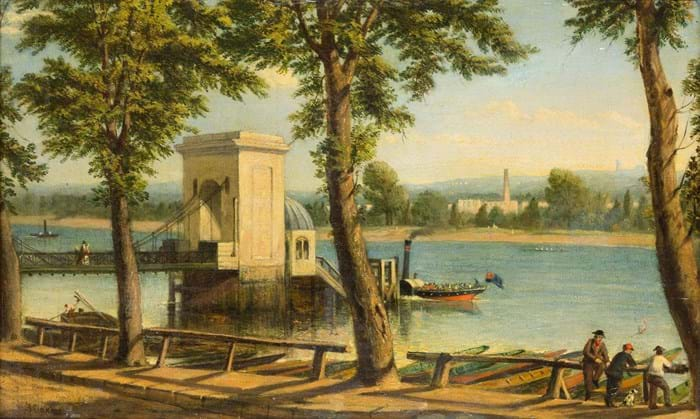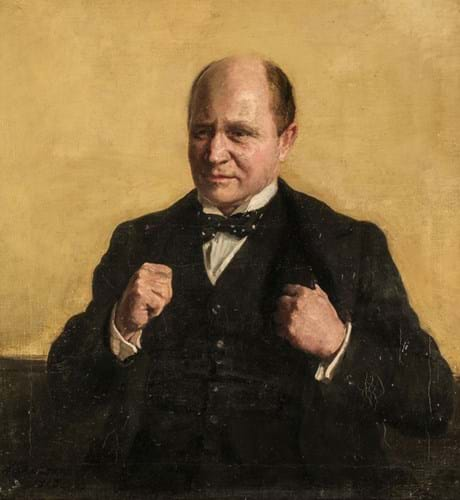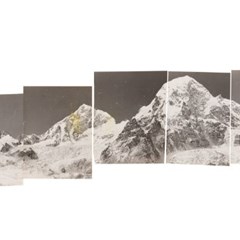What to look out for when buying paintings at auction
If you’re looking for a painting to decorate your home or you’re a collector seeking works by a particular artist or of a certain subject, then auctions are a great place to find and buy a huge range of fantastic pictures.
The Artist's Palette, an oil on canvas from 1968 by Dorothy Mead (1928-1975) – £1400 at Reeman Dansie in November 2022.
Large numbers of paintings appear at auction every week, ranging from Medieval art and Old Masters to Modern and Contemporary works. You’ll find everything from traditional Classical compositions and 19th century Romanic styles to Impressionist and abstract painting.
As a buyer, you can decide to focus on a particular artist (like John Constable or David Hockney), a defined genre (like naïve art or pre-Raphaelite painting) or a particular subject (like landscapes of East Anglia).
Use the search facility on thesaleroom.com to locate upcoming lots, or simply navigate to our Fine Art category to see a huge range of oil paintings currently on offer.

Beside the red motorbike, an oil on canvas by Peter de Francia (1921-2012) that sold for £2000 at Sworders in October 2022.
What determines prices
Oil paintings that emerge at auction are often executed on canvas, although board, wood and copper are also mediums that have been used over the centuries.
While oil paintings tend to command higher values at auction, drawings and works on paper are a more affordable option and can make an excellent launch point for collectors just starting out.

An oil on canvas of a river landscape with a steamboat by British artist Marshall Claxton (1813-81). An example of a scene from the artist’s extensive travels, which included stays in Australia, India, and Egypt, it sold for £500 at Roseberys in November 2022.
Prices are generally determined by the general track-record of the individual artist, the rarity of the work, the desirability of the particular subject depicted, as well as the provenance and condition of the work.
Of course, the desirability of any painting is highly subjective and some buyers will prefer works that have plenty of wallpower for example whereas other may have more connoisseurial tastes and look for particular features. Often the ‘trademark’ style of an individual artist is what collectors seek, although sometimes it is something unusual about a work that attracts most interest – it’s all about getting to know the artist’s hand and then understanding how the market works.
Markets of course rise and fall over time as tastes and fashions change. Whereas some sectors like Victorian watercolours were riding high in the 1970s and 80s, they are much more affordable now, whereas the reverse is largely true for Modern British painting for example.

A portrait by William Nicholson (1872-1949) of the underwriter and insurer Sir Edward Mortimer Mountain. The signed oil on canvas from 1918 sold for £7900 at Dominic Winter in October 2022.
When judging particular works it’s important to consider the condition. Works in original condition (meaning they haven’t been restored) tend to be favoured and this can make a huge difference to the price. If a work has been ‘relined’, this means the canvas has been strengthened to stop paint loss. If it has ‘craquelure’, this means the paint surface has started to crack although this is not uncommon when it comes to older paintings.
Don’t be afraid to ask an auction house for a condition report of a work you are interested in. Remember, you have to satisfy yourself as to the condition prior to bidding at auction.
When it comes to provenance, a picture with a history of ownership from a notable family or well-known collection will always add to the appeal, while works that have appeared recently for sale are not deemed ‘fresh to the market’ and therefore tend to be favoured less.
Look out for labels on the back of paintings which might give an idea of the picture’s history in terms of who owned it, or who sold it previously.
Cataloguing
The catalogue entry for a painting at auction will normally give you the name of the artist and title of the work, so long as they are known. It might also include some details about the work’s provenance, exhibition history and condition.
In terms of attribution to a known artist there is an established terminology in the cataloguing of paintings. For example:
'Peter Paul Rubens 1577-1640'
In the auctioneer's opinion, a work by the artist.
'Attributed to Peter Paul Rubens 1577-1640'
In the auctioneer's opinion, probably a work by the artist.
'Circle of Peter Paul Rubens 1577-1640'
In the auctioneer's opinion, a work by an unidentified artist working in the artist's style and during the period of the artist's life.
'Follower of Peter Paul Rubens 1577-1640'
In the auctioneer's opinion, a work by an unidentified artist working in the artist's style, contemporary or near contemporary.
'School of Peter Paul Rubens, 17th century'
In the auctioneer's opinion, a work executed at that time and in the style associated with that artist.
'Flemish School, 17th century'
In the auctioneer's opinion, a work executed at that time and in the style associated with that location.
'Manner of Peter Paul Rubens'
In the auctioneer's opinion, a work by an unidentified artist working in the artist's style but at a later date, although not of recent execution.
'Style of Peter Paul Rubens'
In the auctioneer's opinion, a work by an unidentified artist working in the artist's style and of recent execution.
'After Peter Paul Rubens 1577-1640'
In the auctioneer's opinion, a copy by an unidentified artist of a named work by the artist.
- The terms signed and/or ‘dated and/or inscribed means that, in the auctioneer's opinion, the signature and/or date and/or inscription are those of the artist.
- The term bears signature and/or date and/ or inscription means that in the auctioneer's opinion that artist's name and/or date and/or inscription have been added by another hand.

A View towards Ludlow Castle, an oil on board by George Hall Neale (1863-1940) that made £380 at Halls in November 2022.
Resale Right
Living artists and the descendants of artists who died within the last 70 years are entitled to receive a resale royalty each time their work is bought.
The right applies only when the sale price reaches or exceeds the sterling equivalent of €1000 and is calculated on a sliding scale. Please note ARR is calculated in euros. Auctioneers will apply current exchange rate and will include the charge where applicable on your invoice.
What to do next
Decide what kind of painting you’re most interested in and use the search facility on thesaleroom.com to find lots coming up for sale.
You can filter your search by, among other things, price and by location of the auction house to narrow down your selection.
To research recent prices at auction to see how much works by different artists sold for you can also try out the Price Guide.
If you are new to bidding check out our guides to buying at auction – it’s easy once you know how.



